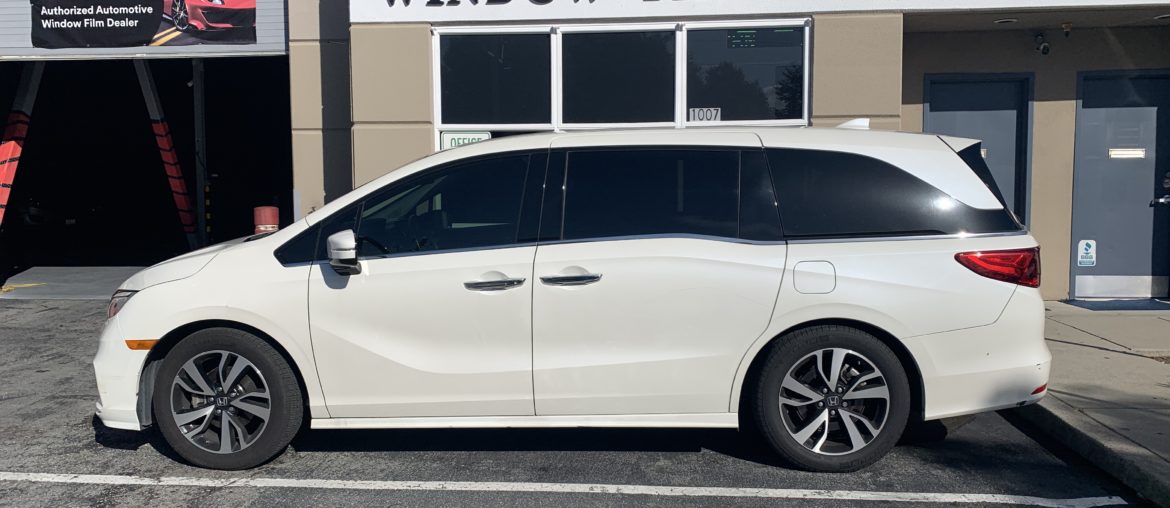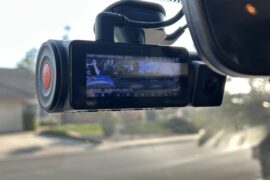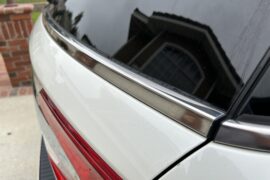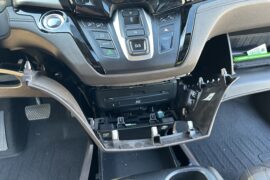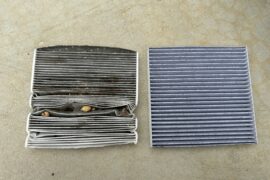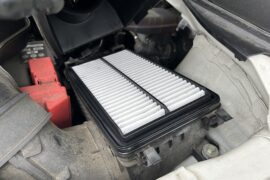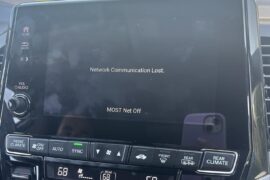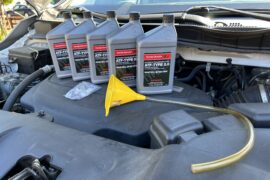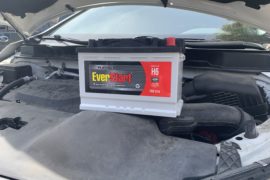Ever since we got our Honda Odyssey, I’ve been wanting to get the windows tinted. There are two main reasons why I wanted to get the windows tinted: one, to have UV protection to reduce UV exposure from the sun, and two, match the front side windows to the rest of the car so there isn’t such a harsh transition in window tint between the front and side windows.
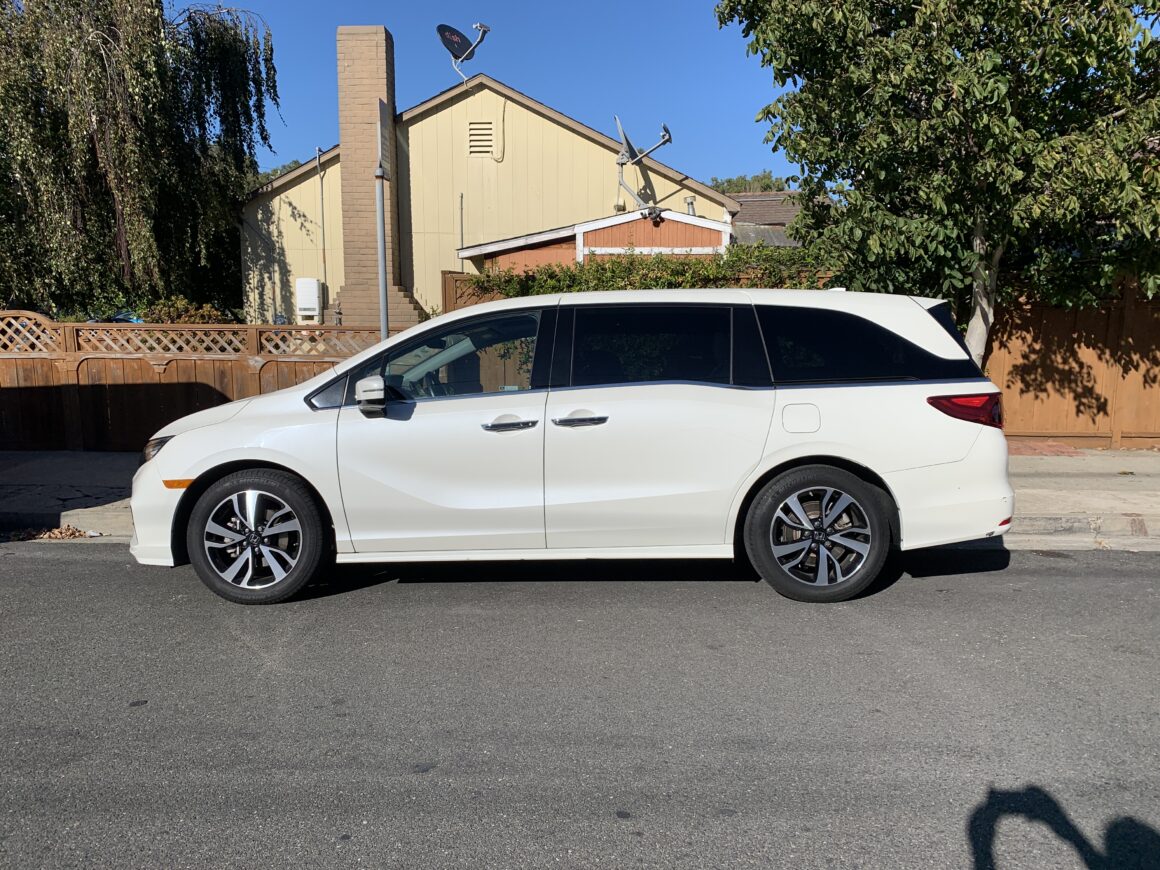
This is our main vehicle that we use to transport our family around, so it’s incredibly important for us to have window tint for UV protection. I also think it looks so much better once you darken the front side windows so that there is a nice uniform tint. There are also a number of other benefits from getting your windows tinted as well.
Benefits of Window Tint
There are a lot of benefits to window tinting that you should consider:
- UV Protection: over exposure to UV rays can cause cancer, furthermore they can damage your car’s interior over time.
- Privacy: you can still look out of tinted windows, yet it is difficult to see in from the outside. This might be beneficial as it can deter potential thieves as they may not want to waste time breaking into a vehicle if they don’t see the potential “prize” waiting for them inside.
- Heat Rejection: depending on the window tint you get, there can be a certain level of heat rejection. This can block the heat and keep your interior cool, which can make it much more comfortable to be in the cabin especially on hot days.
- Improved Looks: the Honda Odyssey comes from the factory with colored glass from the middle of the vehicle back, yet with no color on the front. Therefore, there is a harsh transition line where the front door windows are clear and the sliding door windows and back are all much darker.
What is the Factory Window “Tint” on the Rear?
The original windows on the Honda Odyssey actually come with factory-colored glass on the 2nd row and 3rd row side windows, as well as on the tailgate. The front door windows and windshield do not have any color or tint on them. From what I understand, the factory-colored glass doesn’t have any UV-protection, nor is it as effective as the heat rejection that you might get from a window tint film.
Since the colored glass is not a window tint, no one really knows what percentage “tint” it is. If you’re getting your windows tinted at a tint shop, they should have a window tint meter which can measure the VLT (visible light transmission) and give you an estimate of the tint percentage. Since the result will be an exact percentage, it might be difficult to completely match. Window tints are generally made in increments of 5% or 10%, so if you’re looking to match the existing colored glass, you can do your best to get the closest percent tint that you can.
VLT (visible light transmission) is how much visible light (in %) that is allowed to pass through the window tint. For example, window tint with a 25% VLT means that the window tint only allows 25% of light to pass through it.
The 5th generation Honda Odyssey has an approximate VLT of 25-30%. This 25-30% tint applies to all of the colored glass on the sides and the rear of the car. If you’re looking to match, you can choose a tint that closely matches with that percentage. Even if the tint is not the exact same percentage as the factory tint, you will likely not even notice such a slight difference.
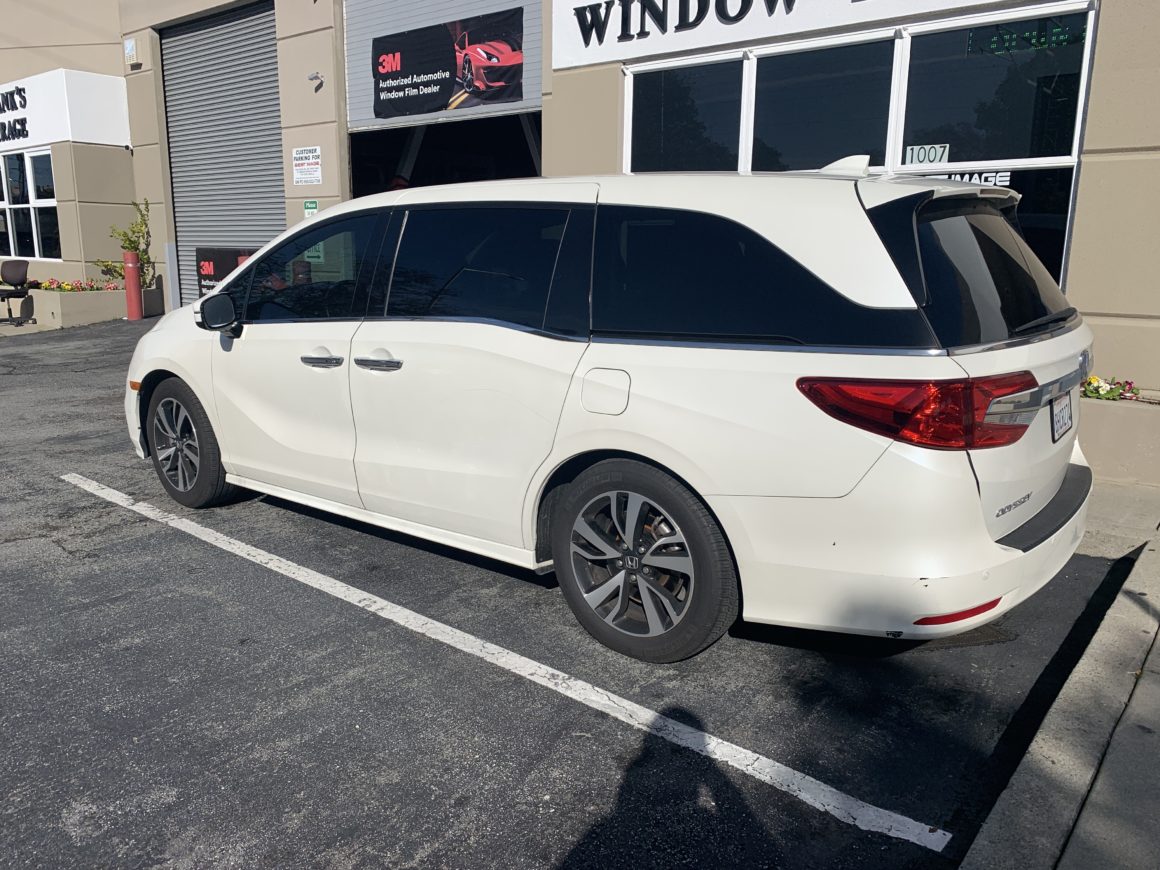
If you plan to tint your side and rear windows, you will have to take into account the existing colored glass “tint” along with the new tint darkness. These two tints can combine to create an even darker tint, so you need to plan accordingly.
To calculate what overall tint percentage you will have when installing window tint over existing colored glass, you will have to use a formula:
[OEM colored glass tint %] x [new overlaid window tint % / 100%] = overall window tint %.
For example, if you installed a 30% window tint over the existing 25% colored glass tint, you will get: 25% x 30%/100% = 7.5% overall tint. This results in a VLT of 7.5%, meaning 7.5% of light will pass through the new combined tint.
Window Tint Laws
I highly recommend you follow your State’s Window Tint Laws to ensure that you are in compliance. Sometimes, there’s a gray area where overstepping the allowed tint percentage won’t get you pulled over. This is usually with a tint percentage that is not blatantly too dark or hazardous. But it can still be risky as you may have just paid for a window tint, but would have to remove it and pay a fix-it ticket if you get pulled over. To be risk and worry-free, fully adhere to your window tint laws in your State.
Before/After Window Tint Photos of my Honda Odyssey
For my 2019 Honda Odyssey, I went with 3M FX Premium Window Tint and chose to go with the 35% tint on the front side windows and moonroof, and 55% on all of the rear windows (on all windows that had factory colored glass.) I didn’t want tint installed on the front windshield as I wanted complete visibility out the front.
As for UV protection, windshields are made of laminated glass, which block 98-99% of both UV-A and UV-B rays. I also had the moonroof tinted 55% as I wanted to still allow plenty of light to come in, yet still have UV protection.
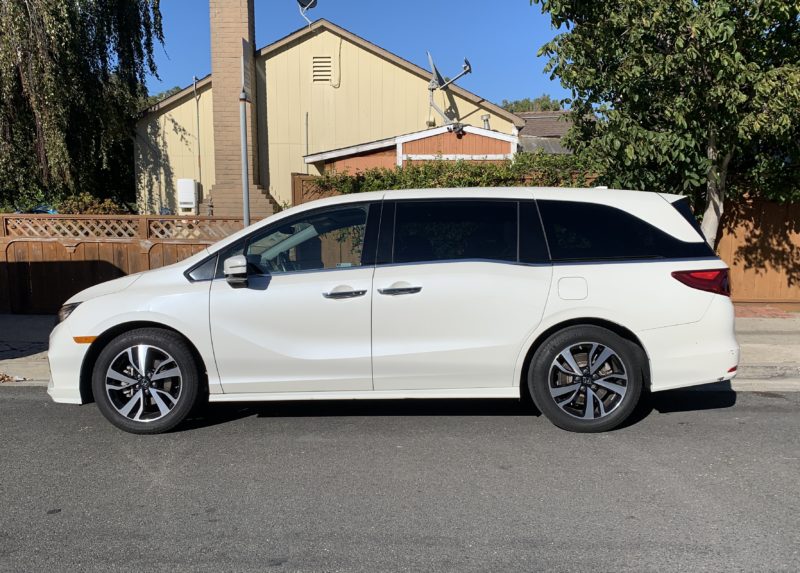
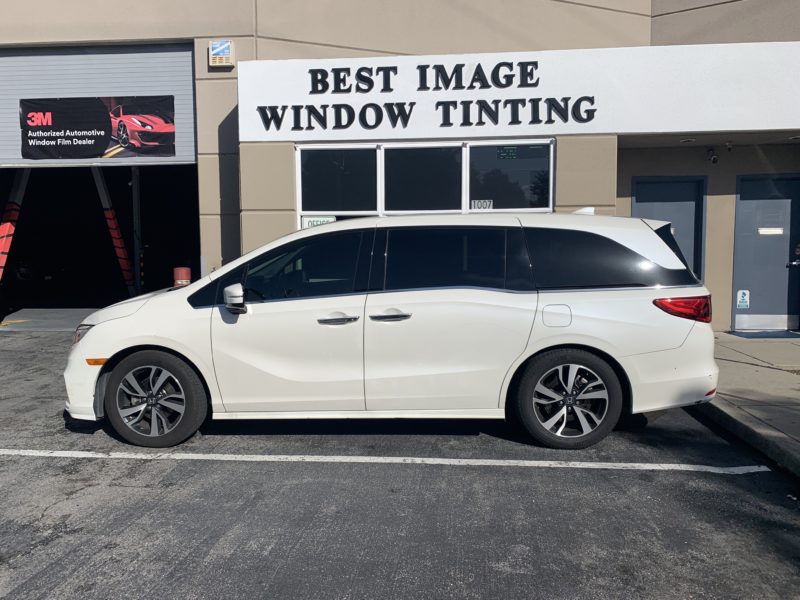
I think the tint came out great and it really changes the look of the Odyssey. There will be small bubbles in the tint that are supposed to go away after a few days up to a month. You should also not be touching or rolling down the windows for at least a few days after getting the window tint installed.
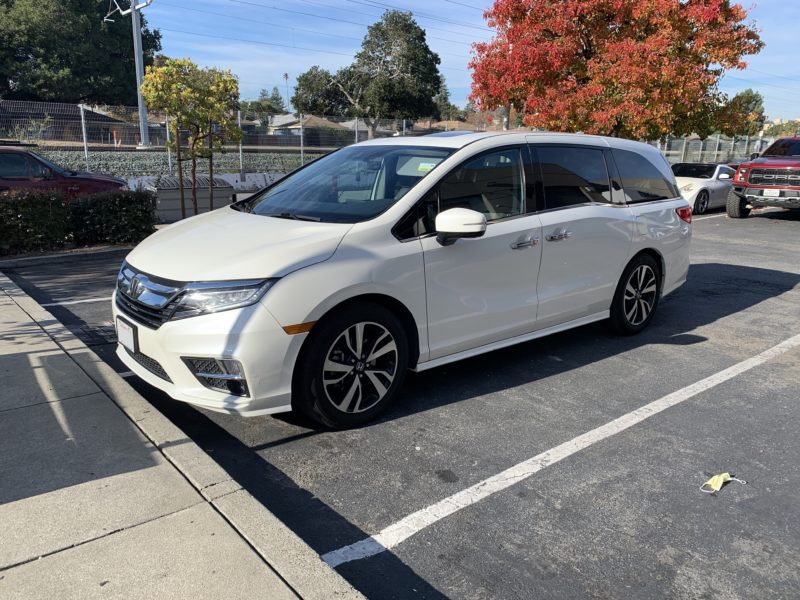
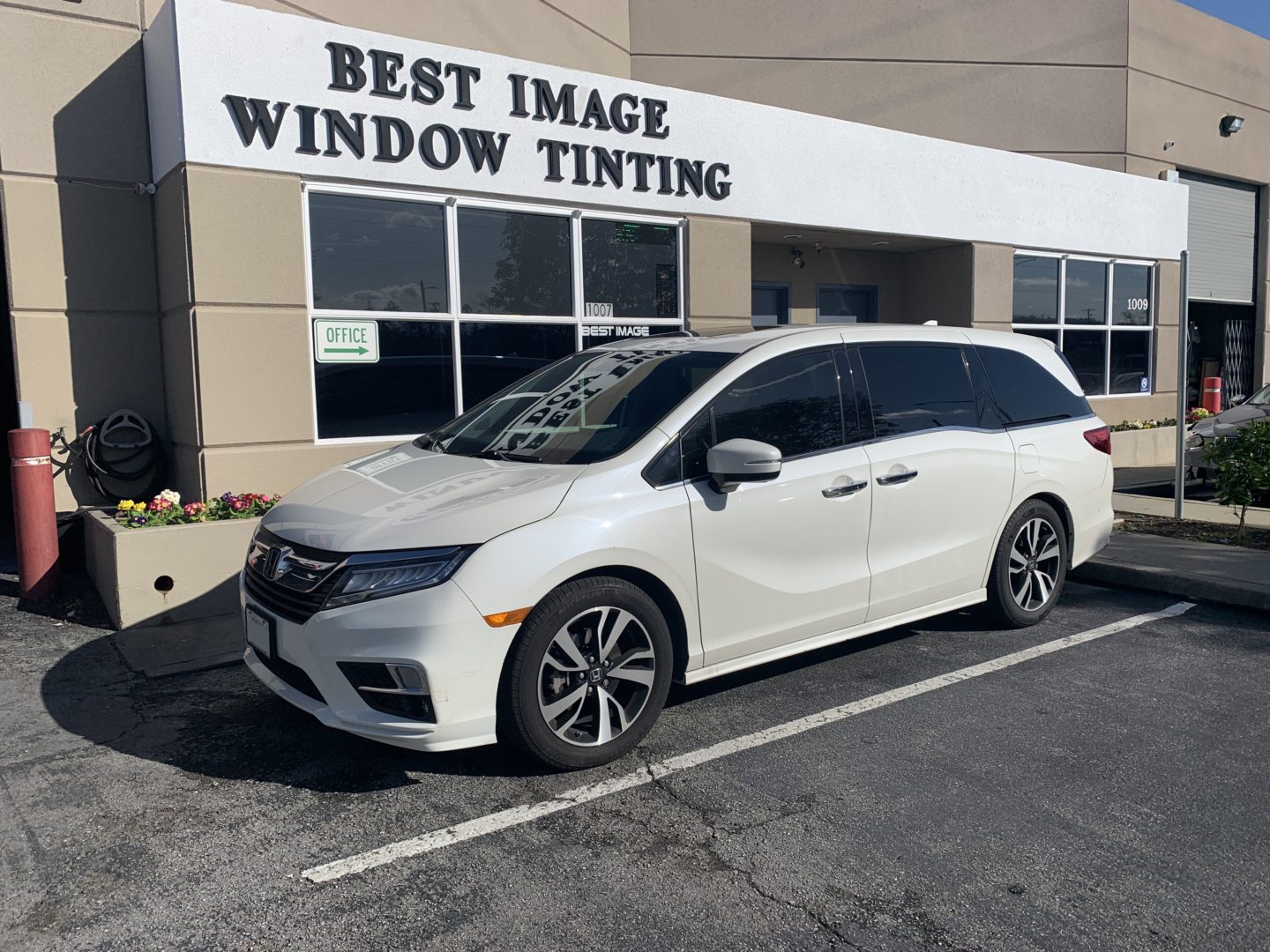
When you already have colored glass, it makes it a bit more complex deciding on the tint that you want on your vehicle. I hope that this post provided you with enough information to decide on the exact tint and percentages that will result in what you’re looking for.

